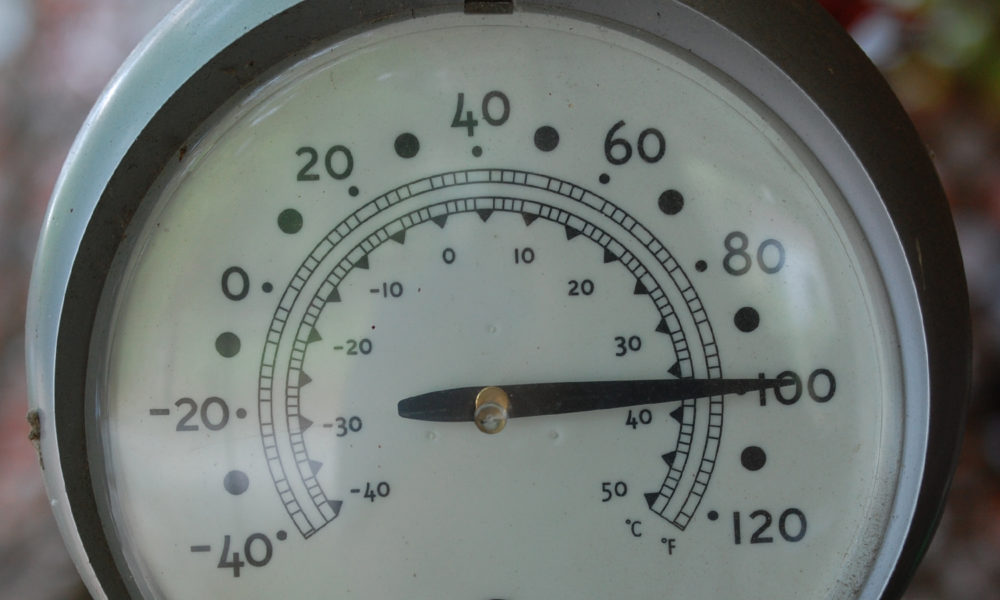Extreme summer heat has arrived early in the United States. It’s 11 a.m. here in Massachusetts and the heat index, or “feels like” temperature, in my town is 97 degrees Fahrenheit and rising. I’m questioning writing this blog; it’s the third day with temperatures topping 90, which makes this an official heat wave and means my un-air-conditioned house is now saturated with heat. I’m not sure I can find a place cool enough to sit and write about… heat. The crux of this post is this: there’s good reason to be very wary of summer in the US and to fight to keep it from growing more dangerous. Hear me out.
1. Summer is now danger season
Summer is deeply ingrained in our society as the time to have a good time. Fun, play, vacation, barbecues, picnics, days at the beach. In June each year, with schools across the country letting eager kids loose and the playful season wide open before us, we want to enjoy summer. This year, especially, we need to enjoy summer. The pandemic has kept us cooped up, stuck at home, away from our favorite people and places. We have living to catch up on.
That’s just our human truth this summer.
The climate truth this summer is different, and not necessarily compatible with our plans.
Most of us have noticed that our climate has been different for some time now. With each passing year, the summer season, weather-wise, only strays farther from what we know as “normal”. NOAA recently updated the 30-year climate period it uses to define “normal” conditions: “normal” is now warmer than in the past. This may result in fewer weather forecasts calling out “unseasonally hot” temperatures, but it won’t change how bad a heat wave feels in June.
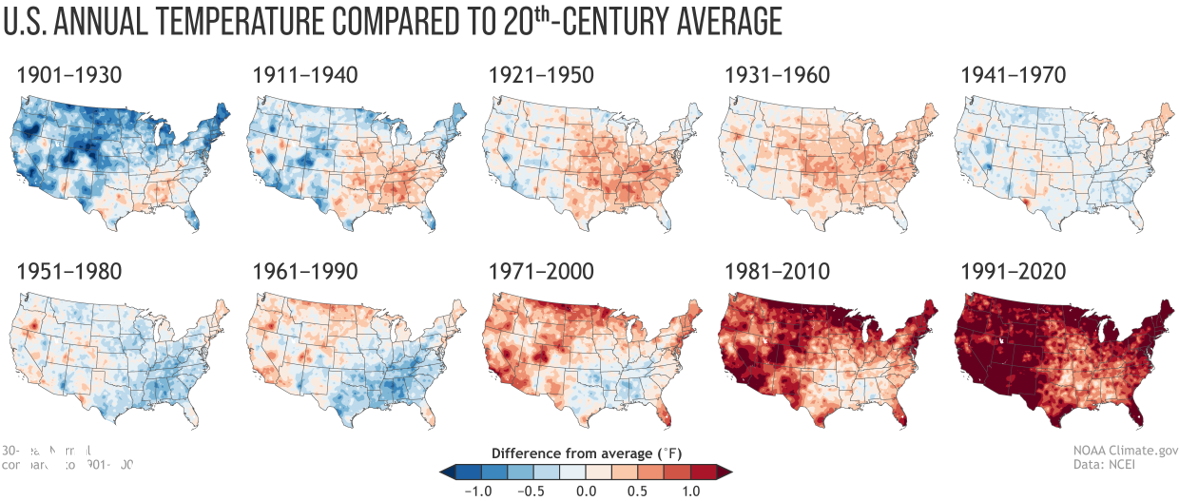
NOAA’s new 30-year climate period, 1991-2020, is significantly warmer than the 20th century average. As these maps show, “normal” is warmer than it used to be. Source: NOAA
Hurricane season started June 1, and we are anticipating yet another one with above-average storm activity. Large parts of the country are dealing with drought, which will worsen as the summer wears on. The western United States is facing a frightening wildfire forecast, now through fall, following last year’s record-torching season. Already, wildfires in Arizona have exploded in size in recent days, necessitating evacuations and highway closures.
And it’s going to be hot. Here in early June, it already is; much of the US is blanketed by what some are calling a “heat dome”. If you had the money to pick yourself up and relocate for the summer to a location free from these threats, you would need to leave the continental US.
2. We are not remotely prepared
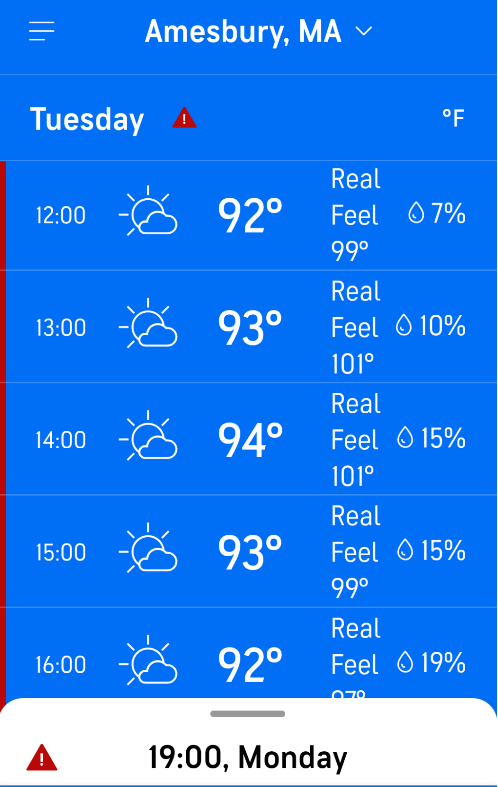
At 12:30 p.m., the heat index has hit 98 degrees Fahrenheit outside, even with the breeze. I’m wondering about my 12-year-old son, who is at outdoor school today (a COVID adaptation), with a thermos of melting ice cubes to sip on. I’m also wondering about my husband, who must be sweltering along with his students, in his unairconditioned high school classroom. I’m joining work calls but staying off video because I’m wearing the skimpiest tank top I could find. I’m feeling foolish for being so unprepared. I have the resources for air conditioning, and in the last couple of years we broke down and bought a couple of window units at a yard sale. But it’s only June 7th and we haven’t installed them yet. Just like we haven’t recharged the car’s AC coolant yet. Just like our bodies haven’t acclimated to the heat yet…
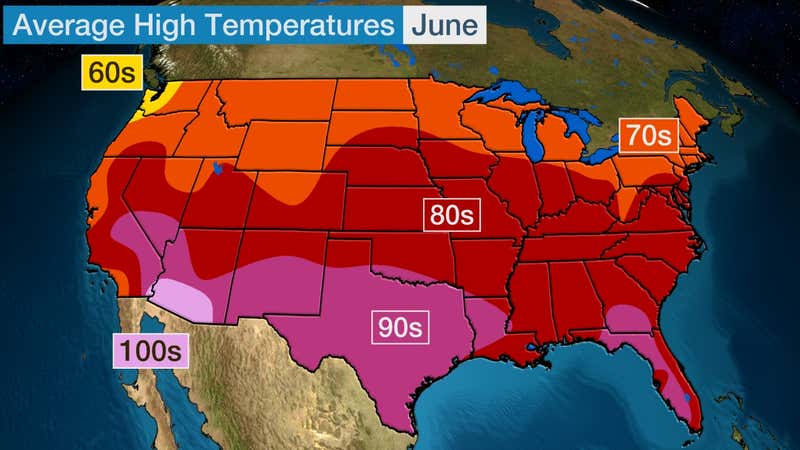
We’re unprepared for this week’s heat for good reason: it’s unusual for June. The National Weather Service is more aggressive about issuing heat warnings early in the season because health risks are heightened when people have not had a chance to adjust to summer heat, physiologically. Source: Weather Channel
From households to municipalities to states and the federal government, we’re not remotely prepared for the summer climate we now have. Many schools in the US Northeast are releasing students early today because their buildings lack air conditioning. (I just received a notice that my son will be sent home early tomorrow. Today at outdoor school, they coped with the heat by just hosing kids down in their clothes). Parts of our transportation infrastructure have been found to buckle and melt in extreme heat. Too much of our public housing, even in the steamy US South, lacks air conditioning. As I move from room to room, seeking the coolest spot for me and my laptop, I imagine being in cramped, urban public housing with no AC, and with the added misery of the urban heat island effect amplifying daytime heat and blotting out the cooling relief of nighttime. I read a story about the ongoing, record-breaking heat wave in the Middle East and Central Asia, where temperatures topping 120 degrees F are widespread this week. I’m sweating here in my old New England home, but thinking: wow, this is nothing.
3. Summers are only going to get more dangerous in our lifetimes
Pick a region, choose a climate impact and look at a year in the future – it doesn’t much matter what you choose, it’s all trending in a dangerous direction. This summer could be brutally hot and still be the mildest summer for the rest of our lives. To drive this point home, here’s a comparison between this week’s oppressive heat and the projected extreme heat my team explored in our 2019 analysis and report, Killer Heat in the United States: Climate Choices and the Future of Dangerously Hot Days.
- In Minneapolis, starting this past weekend, temperatures are expected to top 90 degrees for at least six straight days, then hover around 90 for an extended period. According to our analysis, without action to curb climate change, the city could experience nearly 50 such days each summer, on average, by mid-century.
- Around Tulsa, Oklahoma, the heat index is forecast to top 100 degrees F this week. This isn’t uncommon; historically, Tulsa has seen roughly 25 days each summer with such temps. But mid-century, it could see more than 75 such days and late century, more than 100 such days – effectively, the entire summer.
- And in Charlotte, NC, the heat index will approach 100 later this week – certainly not unheard of, but something that happened, on average, 7 times a year between 1971 and 2000. By mid-century, without action to curb climate change, these conditions could occur nearly 50 days per year and by late century, 80 days – more than a 10-fold increase.
Add a power outage to this heat (as was seen in the deadly Chicago heat wave of 1995), and the AC goes off and people start to die of heat stroke. These are just cities I plucked from the NOAA heat index forecast. To look at your city’s current heat index forecast, go here, and for its future heat index projections, go here.
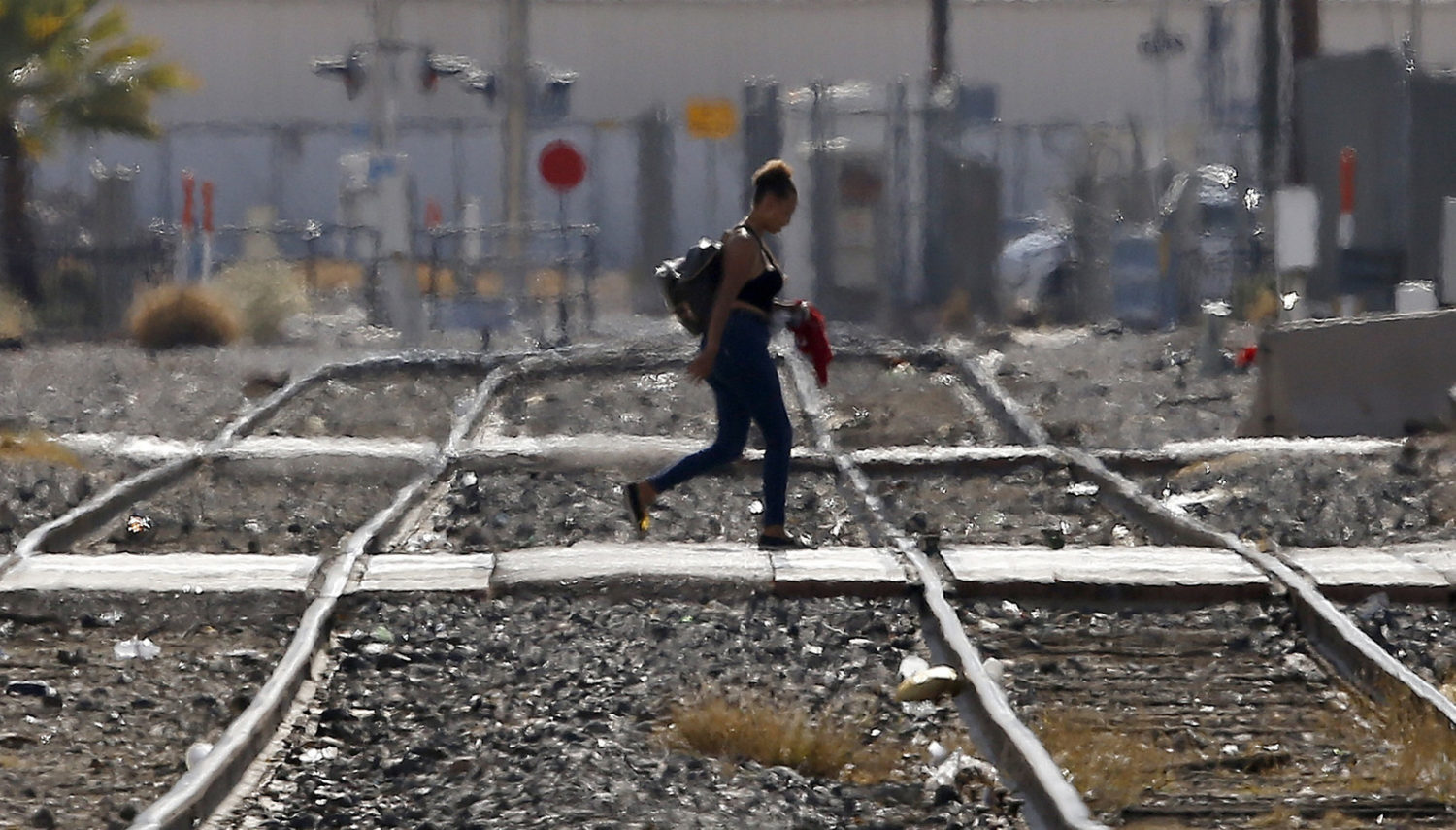
4. Some people face greater risks
Storms, flooding, drought, wildfire, extreme heat – whatever the climate extreme they’re hit with, people fare differently. Take Hurricane Katrina, for example. The vast majority of people who were still suffering weeks and months after the storm were low-income people and people of color. Take that Chicago heat wave. The vast majority of people who died were elderly, and many had limited mobility or were simply isolated. My phone says the heat index is now approaching 100 degrees Fahrenheit. In conditions like this, many people are at risk of heat stroke and other health risks (see table below). People who are elderly, pregnant, very young, physically or mentally disabled, living with underlying health conditions (like heart disease or obesity), homeless and/or impoverished typically face the greatest risks. In the US, because of systemic racism, a disproportionate number of people living in poverty and living with serious health conditions are people of color. In addition, people who are otherwise healthy but who work outdoors – in farming, for example, large proportions of whom are people of color – face significant health risks under these conditions and must take great care.
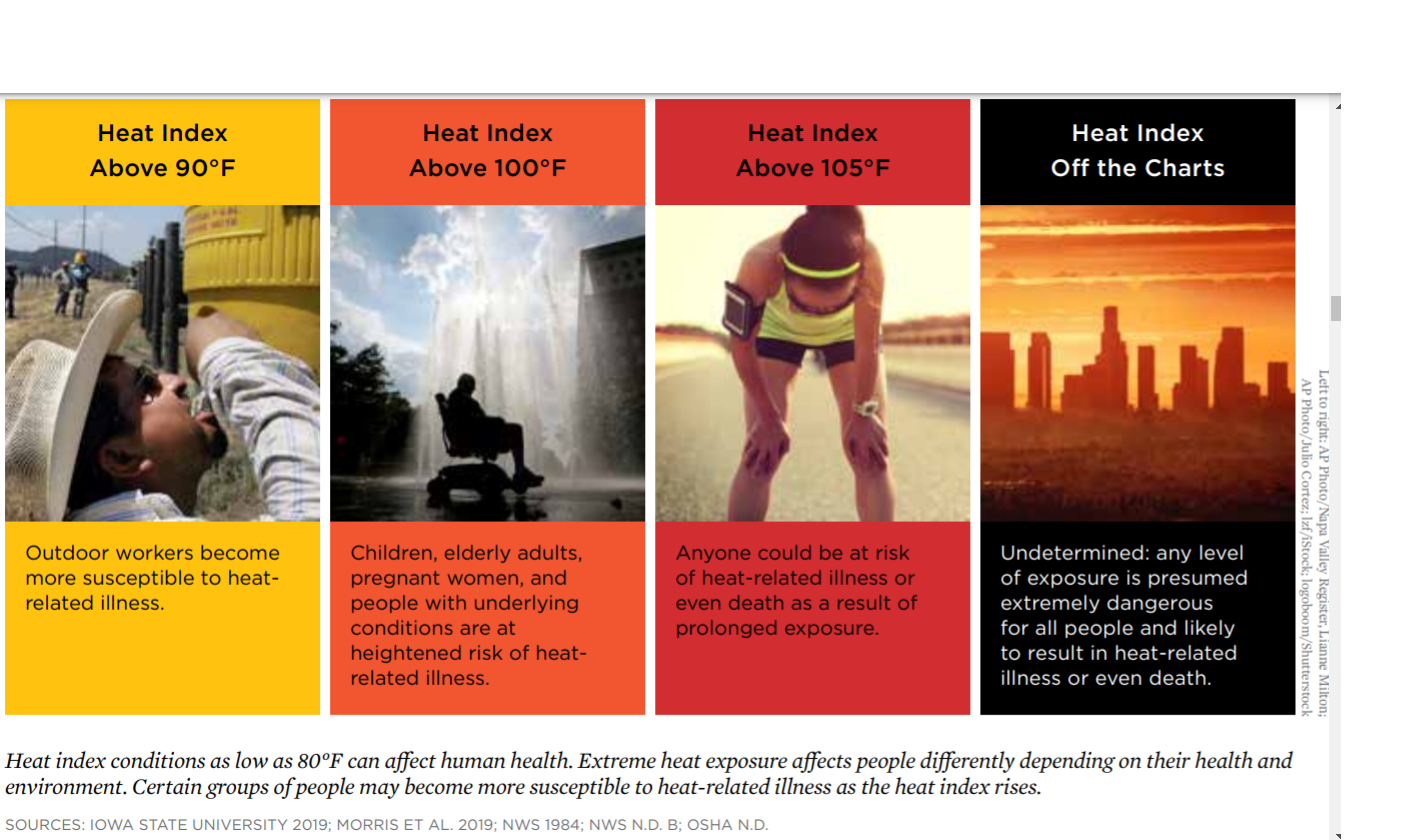
Saving summer and ourselves
It’s 1:00 in the afternoon and the second floor of my house is now off limits: too hot. I just found my rabbit breathing rapidly so I took some scissors to her heavy fur coat and put her in the basement, the last remaining cool place. I’d sit there myself if it weren’t so musty and dark. My local birdwatchers group is posting stories of chicks dying of heat in their nests. Out my window, I’m eyeing the birdhouses in my yard that I know to be occupied. Nature can handle extreme heat, as can people. But it’s a question of when it strikes, how extreme, and for how long.
I have a particular fear that nags at me when it comes to extreme heat. It’s a scenario where we wake up to a couple of weeks of 100+ degree days across much of the country. And, because we haven’t built resilience to this kind of heat, the power grid fails across broad areas, air conditioning shuts off, people die by the thousands at home, chaos ensues in places, everyone suffers, some acutely. It would be fair to call this a dark, dire thought, but it wouldn’t be fair to call it far-fetched. According to our 2019 analysis, “with no action to reduce heat-trapping emissions, by midcentury (2036–2065), the following changes would be likely in the United States, compared with average conditions in 1971–2000”:
- The average number of days per year with a heat index above 100°F will more than double, while the number of days per year above 105°F will quadruple.
- More than one-third of the area of the US will experience heat conditions once per year, on average, that are so extreme they exceed the current NWS heat index range—that is, they are literally off the charts.
- Nearly one-third of the nation’s 481 urban areas with a population of 50,000 people or more will experience an average of 30 or more days per year with a heat index above 105°F, a rise from just three cities historically (El Centro and Indio, California, and Yuma, Arizona).
- Assuming no changes in population, the number of people experiencing 30 or more days with a heat index above 105°F in an average year will increase from just under 900,000 to more than 90 million—nearly one-third of the US population.
Sobering, no?
But I also have a scenario I revisit where I wake up to the news that we’ve had a huge political breakthrough or clean energy innovation and can now readily and rapidly decarbonize the nation and the world. We’ll succeed in slowing climate change and can focus on adapting to the changes we can’t avoid.
And the truth is, we don’t need a huge breakthrough or shiny new technology, we just need to get down to doing the hard work:
- We lack and badly require resilience to the dangers of current and future climate.
- To build resilience requires slowing the pace of climate change through a rapid clean energy transition and other measures to rein in heat-trapping emissions, as well as adapting to the climate change that is underway. Aggressive movement on both fronts is needed if our climate and our ability to cope with it are to align. As we said in our Killer Heat report, “By cutting emissions quickly and deeply, we can slow global warming and limit the increase in the number of extremely hot days. Every 10th of a degree we avoid in increased temperatures will matter to our overheating world.”
- To build resilience also requires asking: resilience for whom? Society isn’t working for a lot of people. So when we invest to keep people safe in a changing climate, we must prioritize those at greater risk today. Toward this end, the Biden Administration’s commitment to Justice40 can be a promising start; when it comes to extreme heat, the funding in the new budget for heat-stress mapping and mitigation are vital, too.
- Building resilience also invites us to ask: resilience for what? Is it resilience that prolongs the status quo? The status quo that doesn’t currently work for – and often actively harms – too many of the world’s people? Or can we build toward something better? Something that centers well-being and community. We can. And if we’re going to invest many billions in long-lived infrastructure and other decisions that we’ll live with for decades, now is time to do so.
It’s 2:30 p.m. and the heat index has dropped a bit to 95 degrees Fahrenheit. There won’t be a real break from the heat tonight where I am, but we’ll open all the windows at sunset and run fans to pull in as much cool air as we can. I’ll put my little AC unit in the window of my tiny home office, make myself presentable for Zoom tomorrow, and hope that the various dog, cat and rabbit ears that stray onto the screen as we cram together don’t distract too much. And for the next week or so, extreme heat will pulse across the country, straining power grids, outdoor work, seasonal activities, and people’s unacclimated physiology. Those with resources will keep themselves comfortable and those without will suffer.
When this dangerous heat finally lifts and we taste seasonal June weather again, we’ll be reminded how sweet summer can be and, I hope, be resolved to fight our hardest to keep it.
